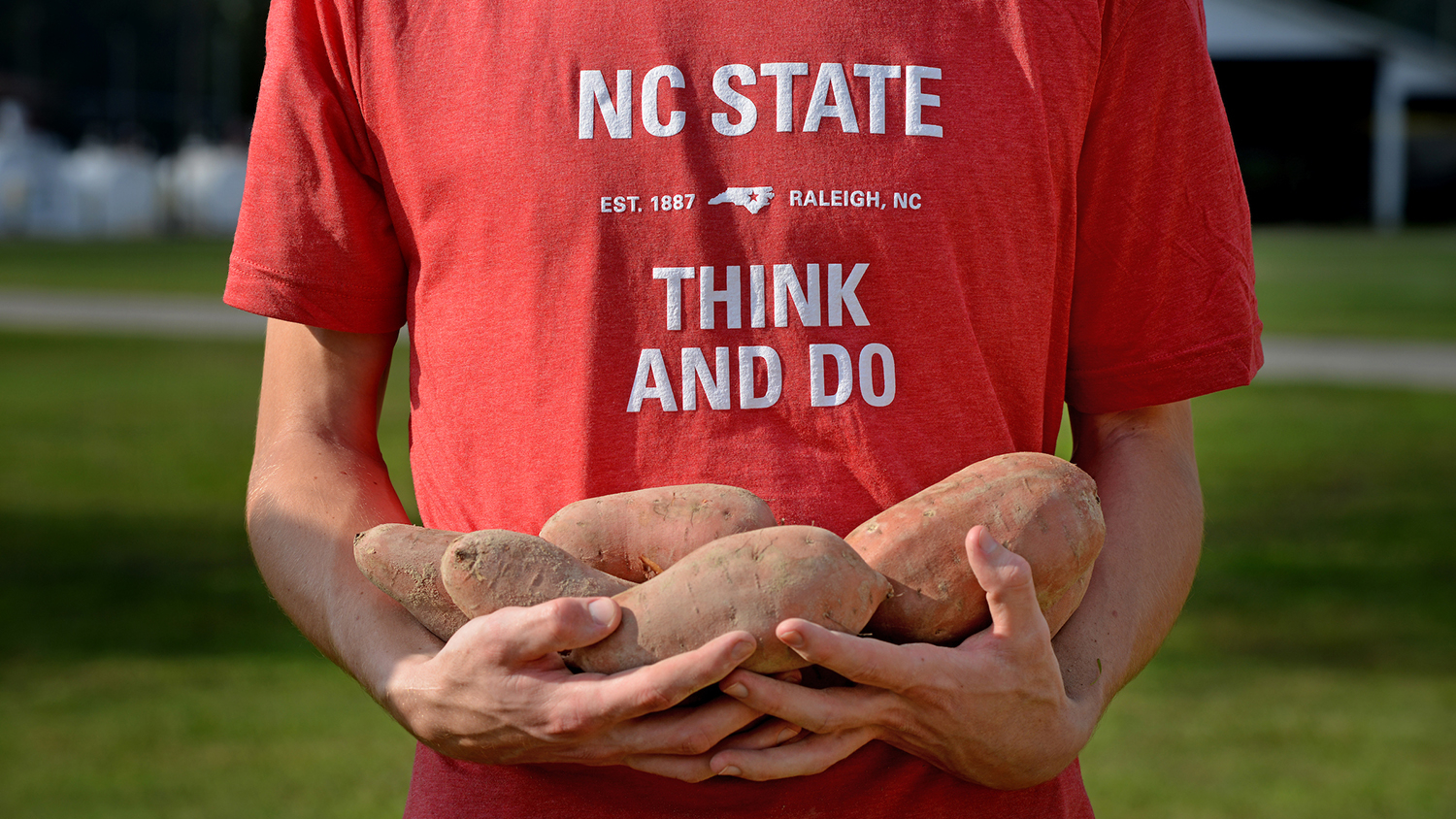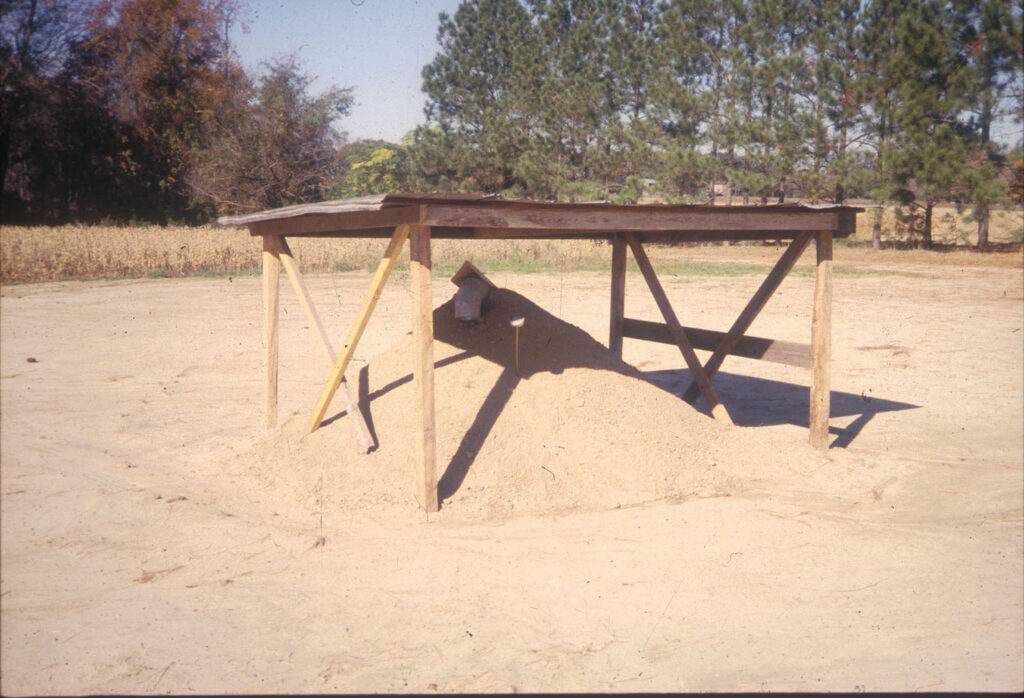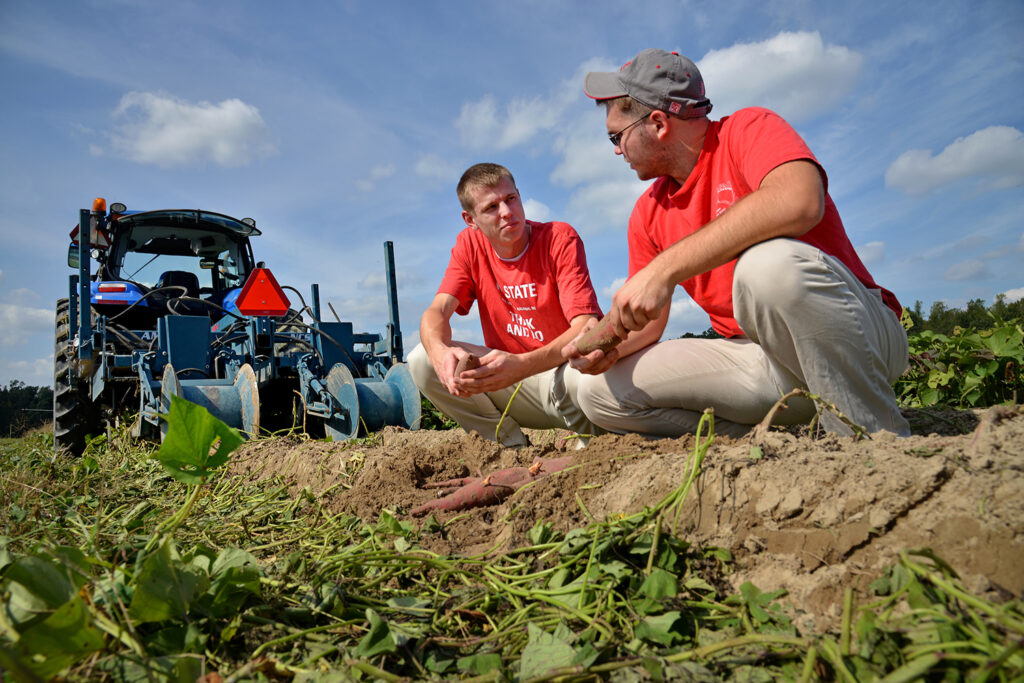
As Thanksgiving approaches, you will probably notice an increase in sweetpotato dishes and treats for the holiday season. However, thanks to researchers like Michael Boyette, a professor emeritus in the Department of Biological and Agricultural Engineering at NC State University, we don’t have to wait for the harvest season to indulge in a buttered up sweetpotato.
Initially a seasonal crop, sweetpotatoes are available year-round due to breakthroughs in storage techniques. But before the glory, sweetpotatoes had very humble beginnings.
“Back in the day, I remember my grandparents grew sweetpotatoes, and they had a ‘tater’ hill in the backyard. Even in the winter we could get potatoes out of the hill,” says Boyette, explaining that tater hills, or potato hills, were popular on small farms throughout the southeast. “Storing produce underground or in a cave-like place is done all over the world.”
Unfortunately, farmers couldn’t produce lasting sweetpotatoes on a large scale with this technique.
Boyette eventually solved the problem with his Negative Horizontal Ventilation technique, which allows farmers to house large amounts of sweetpotatoes in storage facilities.


His journey towards sweet success began in the early 1980s when Boyette started as an Extension specialist in biological and agricultural engineering at NC State. At the time, sweetpotatoes were a minor specialty crop in eastern North Carolina. Boyette explains that in the late 1980s when tobacco production began to decline, farmers started looking for alternative crops. Unfortunately, farmers lost many of their sweetpotatoes to decay and weight loss because of inadequate storage.
Farmers and researchers got to work creating a way to store them in long-term storage facilities. Through trial and error, Boyette and a sweetpotato farmer from Benson, North Carolina, succeeded with the Negative Horizontal Ventilation (NHV) technique. This technique pulls air through the pallet bins to keep the temperature and humidity at optimal levels despite the changing seasons. These storage facilities can keep around 1 million pounds of sweetpotatoes fresh. Today, North Carolina produces 60% of the nation’s sweetpotato supply, and more than 95% of the country’s sweetpotato farmers employ NHV.
Since sweetpotatoes are a healthy alternative to regular potatoes, the possibilities of marketing these root vegetables are seemingly endless, particularly when it can be done year-around. Many sweetpotatoes are shipped to national and international distribution facilities. Packing houses send sweetpotatoes to facilities to produce all kinds of food products. Some sweetpotatoes grown in North Carolina are even used for pet food production.
“The reason they are added to pet foods is because the food needs a good source of energy in it,” says Boyette, noting that pet food companies now use sweetpotatoes as an alternative to wheat flour and corn meal because of their gluten-free properties. “The industry is getting into markets that we weren’t involved in until recently.”

The secret to the NHV technique is that it replicates the natural processes that occur in an unassuming potato hill on a much larger scale. This approach embraces natural solutions and modernizes a tried and true technique.
“This research has changed a regional and seasonal crop into a year-round, worldwide phenomenon,” says Boyette.
Although sweetpotatoes are now available on grocery store shelves all year long, the holiday season provides the perfect opportunity to celebrate their modest beginnings over a slice of sweetpotato pie.
This post was originally published in College of Agriculture and Life Sciences News.